If you arrange it correctly, lilies can grow without soil, as long as there is plenty of sunlight.
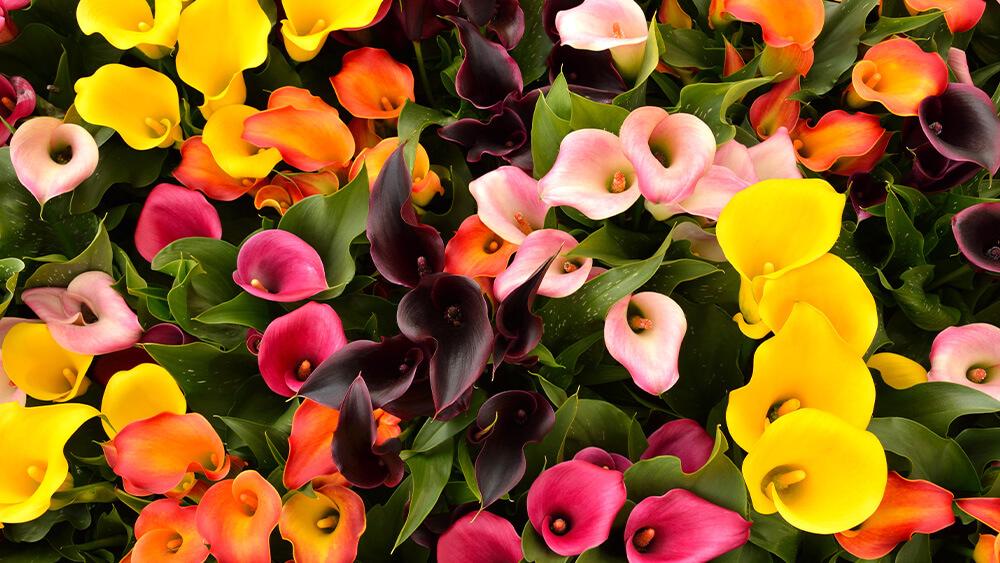
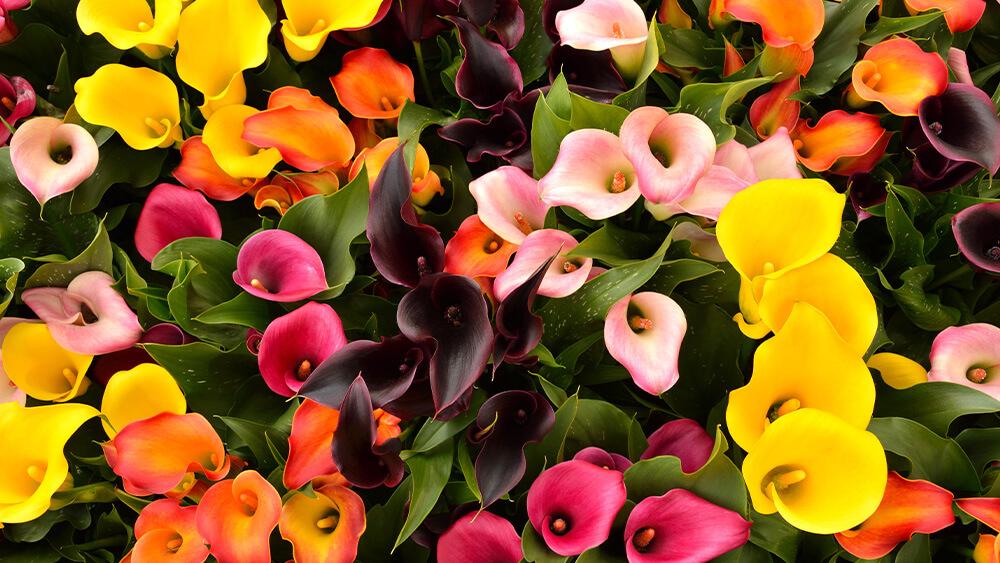
Calla Lilies are frost-resistant even though they originated in South Africa. They have a bundle of nicknames, including arum lily, pig lily, and, most apt, trumpet lily. These flowers love watery areas where they can terry with the frogs and dragonflies. If you set them up correctly, the Calla lily can grow with no soil, so long as there’s plenty of sun.
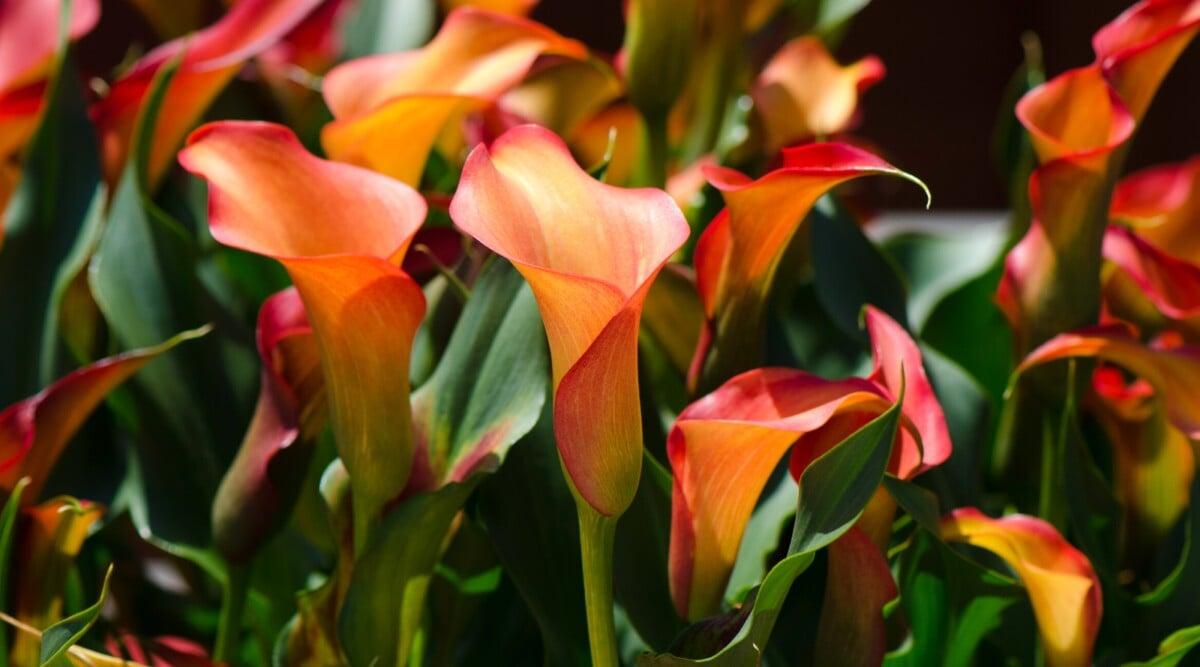
If you appreciate the light aroma of flowers in the breeze, Calla lily will become a treasured part of your landscaping. They’re very fragrant. Most of the Calla Lilies you’ll encounter are white, but thanks to cultivars, you can find nearly every shade you desire to fit in with your gardening plan.
These flowers don’t take up a lot of space, growing about 3 feet tall and 2 feet wide. That makes them an excellent choice for filling awkward holes in the garden. If you have an area that stays relatively wet, your plant will be thrilled. Once you put the lily bulb in the ground, you’ll be rewarded with blossoms in 2-4 months.
If you’re living in a hot zone, the Calla Lily will need partial shade because of the heat. Otherwise, direct sun is just fine (the western part of your yard). In a four-season environment, hold off on planting until there is no more danger of frost.
Warning: Toxic
While beautiful, Callas are very poisonous for both pets and people. The symptoms of Calla Lily ingestion include stomach pain, diarrhea, swollen lips, and a burning sensation in the mouth, tongue, and throat.
The best area of the country for Calla Lillies is USDA Hardiness Zone 8. Where is Zone 8. If you look at a map Zone 8 nearly makes a smile across the US. It begins in Washington, moving along the coast. It goes through Oregon, California, Utah, and Nevada. In the Southwest, it progresses to Arizona and New Mexico. It ends in the Southeast (Florida, the Carolinas). You may sometimes find them in Maryland and Virginia, but only in coastal regions. Don’t feel deterred if you’re not in these areas. You can always overwinter your plant indoors.
Calla lilies need 12 to 18 inches between them, placed 4” down in the soil. These plants grow from rhizomes, so when they mature, you can harvest buds growing off the roots and sow new plants from them. If you have watery spots in your garden, look there as a starting point. They can grow in a foot of water!
Flower Power
The Calla Lily is not just one flower but several series of flowers. There’s the outside petal protecting the inner flowers. The central yellow spike (spadix) is where the tiny flowers cluster.
As mentioned before, calla lilies need little attention. But having some knowledge can keep your plant healthy.
These flowers prefer weather around 70 degrees. If the temperature drops below 50, they go into a dormant stage. If they freeze, they will not grow afterward.
Avoid growing calla lilies in areas of your hard with clay soil. This plant needs a porous blend, such as those containing sand or sand mixed with regular potting soil. When the soil is slightly dry, water them.
If you decide to pot your outdoor callas, at the end of the season, the foliage yellows. Cut it back to soil level and bring it inside to an area that’s cool and dry, like a garage. If your callas are in the ground, just pick the rhizomes out of the soil and store them as you would the potted plants.
Tip: put up a steak or other marking so you can easily spot where you should return the rhizome. In either case, give the flower eight weeks before starting with water again.
I’m an Imposter
Despite the name, the Calla Lily is not a lily at all. The name was actually a botanical blunder. Carolus Linnaeus misnamed it, and by the time another botanist (Karl Koch) discovered it, the proverbial horse was already out of the gate. Calla Lily is stuck.
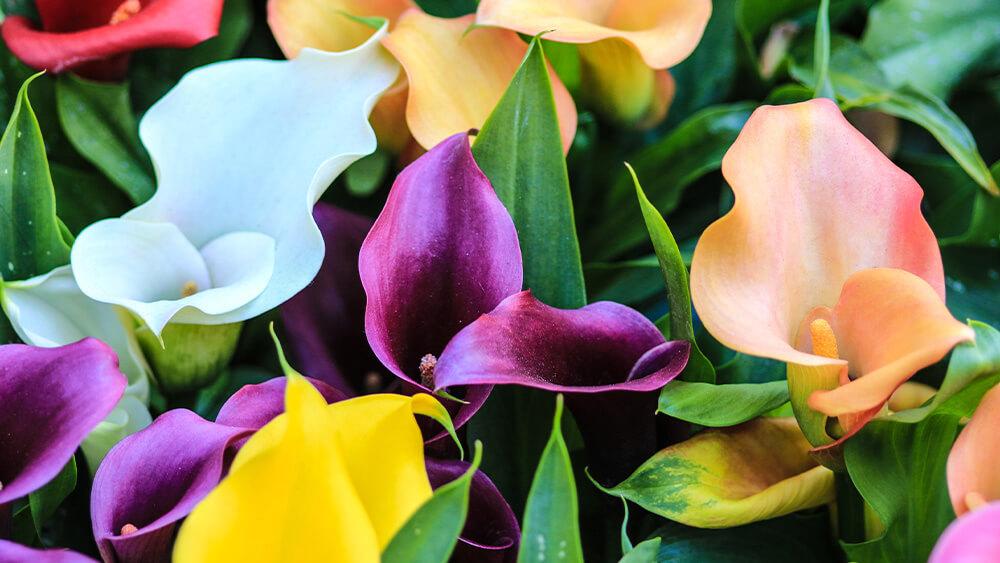
Image credit: © Rene
When you’re buying calla rhizomes, think big. The larger rhizomes will produce plants with a larger flower display.
Don’t Leave Me Alone
Calla Lilies are not the independent sort. They prefer growing in small groups. Pattern them in a circle or triangle, perhaps even of different colors. Keep the size the same for the best visual effect.
One of the most important things to remember about Calla Lilies is that their roots should never dry out completely. Every time you water them, give them a good soaking unless rain does the trick. While they prefer light soils for drainage, the soil needs to remain moist. If you have your outdoor callas in pots, they will dry up long before those in the ground.
Come the fall, when calla leaves begin to yellow, reduce watering. If you experience cold temperatures, take the rhizome indoors. Start watering it after 3 months again.
Meaning & Symbolism: It’s not surprising the ancients found callas enamoring. The name actually comes from a Greek term meaning “beautiful.” Then, as now, Calla Lilies represent charm and grace. Romans followed the Greek obsession with callas. There is a story about the Goddess Venus, who felt threatened by the loveliness of the plant. She cursed them to decrease their allure, which resulted in the yellow spike in the center.
Put callas in the ground between February and June, so long as any danger of frost has passed. When storing indoors, find a cool place (55F). Let the rhizomes dry for three days, then surround them with pine shavings that are very lightly damp. Peek in on them periodically to make sure no rot is developing. You can bring them out from indoors and let them acclimate.
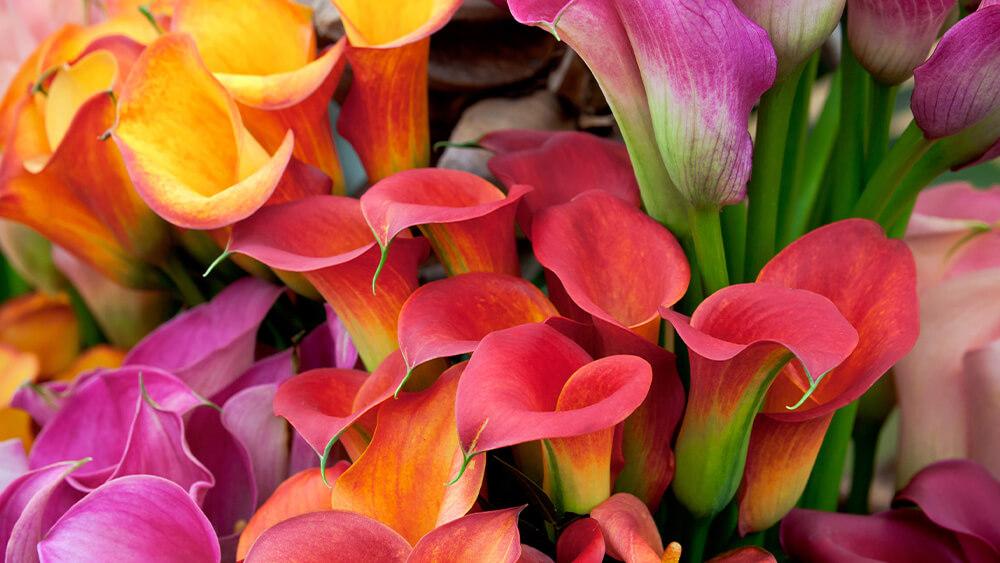
Image credit: © ARTENS
Your calla lily will tell you when it’s ready for a large pot. When the roots look crowded, it’s your first indication. Root-bound callas won’t survive. Gently lift the flowers out of the pot and move them into a new container that’s a bit larger. Fill that pot with soil until you’re within one inch of the rim. Take special care to keep your lily moist during this transition. It helps with plant shock.
By the way, if your planter does not appear to have decent drainage, you can add a layer of coarse gravel to the bottom of the crock.
For in-ground planting, the rhizomes need a 4” depth of porous soil. Make sure there’s a sunny space in the yard for them. Now all that’s left is watching for dryness and enjoying the flowers.
Calla Lily in Art
Artist around the world, and throughout time had a love affair with Calla Lily. In many cases, the flower itself is center stage. Consider how Diego Rivera’s paintings tied the calla to Mexico’s rich culture. Matisse created “Calla Lilies, Irises, and Mimosas). Perhaps the best-known paintings are those created by Georgia O’Keef depicting calla lilies and the way in which they resemble female anatomy.
Calla Lilies thrive with proper pruning. It not only keeps your plant looking great but also supports good health. When your plant is actively growing, prune away dead or damaged stems and leaves, especially those at the plant’s base. If there are any leggy stems, you can trim those too. Prune back to within six inches of the soil. This promotes branching out.
Get rid of spent flowers as they complete their bloom. These do nothing for the calla other than use up energy unnecessarily. Keeping your lily clean opens the path for increased foliage and flowers. Come winter, cut everything down to ground level for dormancy. When the time is right, they’ll start sending out leaves again.
Calla Lilies in Arrangements: Calla lily arrangements are traditional for the 6th wedding anniversary. Bouquets based on the Victorian Language of Flowers send the sentimental message, “I am yours.” This flower appears regularly at weddings as centerpieces celebrating purity and unity.
In USDA Hardiness zones 8 and up, calla lilies are deciduous perennials. In these areas, you can leave the lily in the ground over winter. You may not see anything, but the lily is preparing for the next season. When you treat them properly, you’ll get flowers year after year.
When the weather won’t allow, you can grow calla lilies indoors, or offer them a space in the house where the rhizome can rest until spring.
Colorful Calla Lilies
Because Calla Lilies have various colors, each hue has a different meaning. Orange, for example, represents fearlessness and determination. Purple callas are exquisit and mean wisdom, fidelity, and respect.
Black Calla Lilies are actually deep purple. They are an emblem of magic, mystery, and elegance. Yellow callas speak of gratitude and respect. Finally, the stunning pink calla is the flower of romance.
There are a few pests and problems to watch for in your outdoor callas. One is Bacterial Soft Rot. This happens when you accidentally injure the rhyizome when you repot or transplant. Those injured will struggle to survive.

Image credit: © leesle
Botrytis is a grey mold created by fungus. Ie appears on leaves, stems, and flowers. This particular disease grows best in cool, wet conditions. Don’t water your plant at night and put water directly into the soil rather than any leaves. Give your plant good air circulation.
Powdery Mildew is another fungus you can fight with good spacing and pruning so air circulates better The leaves will seem white or gray, and they may curl.
As for bugs, we come to Aphids. These little insects are red, green, or black. They feed off the underside of the calla leaves, leaving a sticky residue in their wake. To make matters worse, the residue attracts ants. Insecticidal soap applied periodically may fix the problem.
Slugs are another pest. They leave holes in the foliage, leaving a slime trail. They feed by night. If you can hand pick them off the plant that’s a good start. You can also try setting up a beer trap with steep sides. The slugs go in and cannot get out. Add a barrier of coffee grounds around the plants, too.
If you see little webs around the leaves of your plant, you have spider mites. They are juice-suckers, leaving white dots on the foliage. In time, the leaves dry and yellow. Give them forceful watering with insecticidal soap.
Trips like juice tool You’ll notice discolored flects on the fronds. Thrips will move from plant to plant. Remove any debris from the plant and keep it clean.
When to Send Calla Lilies
There are events for which Calla Lilies are the perfect floral choice.
There are three common problems in outdoor calla lilies. First is the plant seems to be growing very slowly. Usually, this happens when they are not in the right growing location. Check the moistness of the soil, and how much light they’re getting. If the plant is potted and has been there for 2-3 years, it likely needs a new container with more room.
A second issue is the failure to bloom. Calla needs a little cold to begin flowering. So when it’s during dormancy, keep the temperature around 45F. Then, when you first plant it, give it a boost of fertilizer. They’re very hungry during the flowering phase. If you’ve grown your callas from seed, they won’t flower in the first season. It usually takes a couple of years before blossoms come.
Third, when your calla lily turns yellow after flowering, there’s nothing wrong whatsoever. It’s just dying back. In other phases of growth, however, it’s often a nutrient deficiency. It’s worth getting a soil test. Also, review your plant for signs of disease or bugs
Names, Names, Names: Besides the names mentioned earlier, calla lily has yet more! They include African Lily, Brosimun aethiopica, Altar Lily, Florist’s cala, Garden calla, Lily of the Nile, and Richardia.
Calla liles stand out in the landscape. You can mix colors, or put them with complimentary plants. They don’t take a lot of care to achieve success. If you have a water feature in your yard, the lilies will love it. As a perennial, you can buy once and have years of enjoyment afterward.